Wedding Dress (Sri lanka / Traditional )
Wedding Dress (Sri lanka / Traditional )
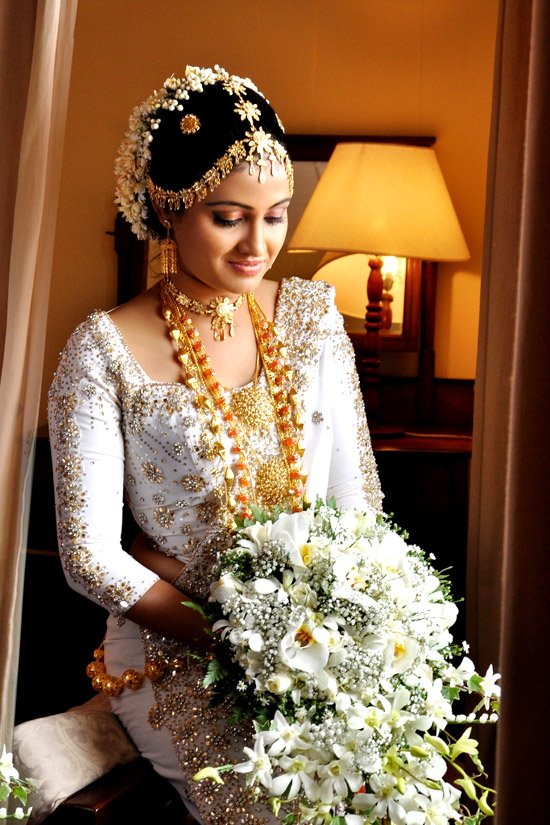
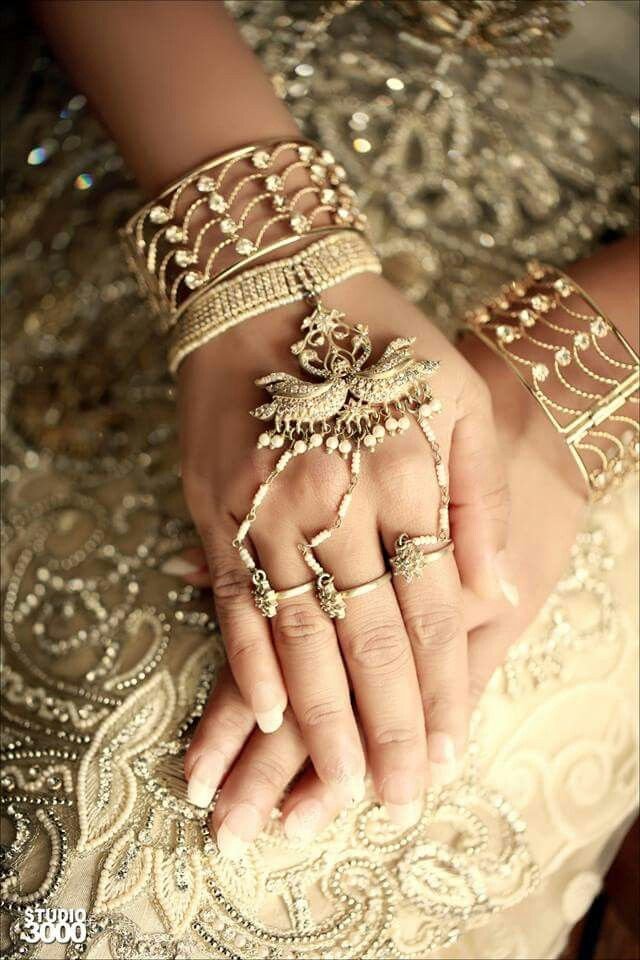
History

The Poruwa ceremony (beautiful exchange of vows and symbolic gifts) appears to have existed in Sri Lanka before the introduction of Buddhism in the 3rd Century B.C. The Poruwa ceremony was a valid custom as a registered marriage until the British introduced the registration of marriages by Law in 1870.
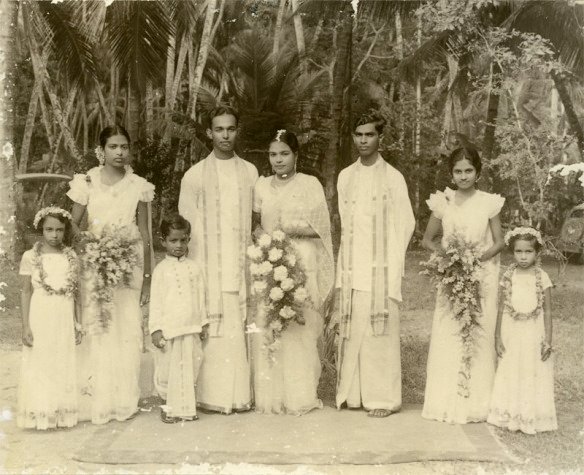
Today's Poruwa ceremony has been influenced by both upcountry and low country customs of Sri Lanka. These traditional Kandyan Weddings are influenced by the Hindu culture which gives prominence to “Nekath” which refers to the auspicious time.
The Costume And Jewelleries of The Kandyan Bride
If there is anyone who strongly attracts attention and admiration towards oneself, then it is certainly a Sri Lankan bride. The Kandyan bride in her traditional costume of the Osariya (sari) and the complementing regalia looks like a queen and, she is certainly the cynosure of all during the wedding ceremony. Unlike a western bride who would choose the simplest of dresses and the most moderate jewellery, the Kandyan bride opts to be lavish in everything she wears. A grand sari often worked profusely in gold or silver thread, with pearls, stones, beads, and sequins adding an extra sparkle to the already eye catching design. A Kandyan bride will certainly be incomplete if she chooses to drop even the smallest piece of jewellery from the traditional ensemble. The Bride begins her dressing at an auspicious time assisted by her mother or female relative who is considered to be lucky.
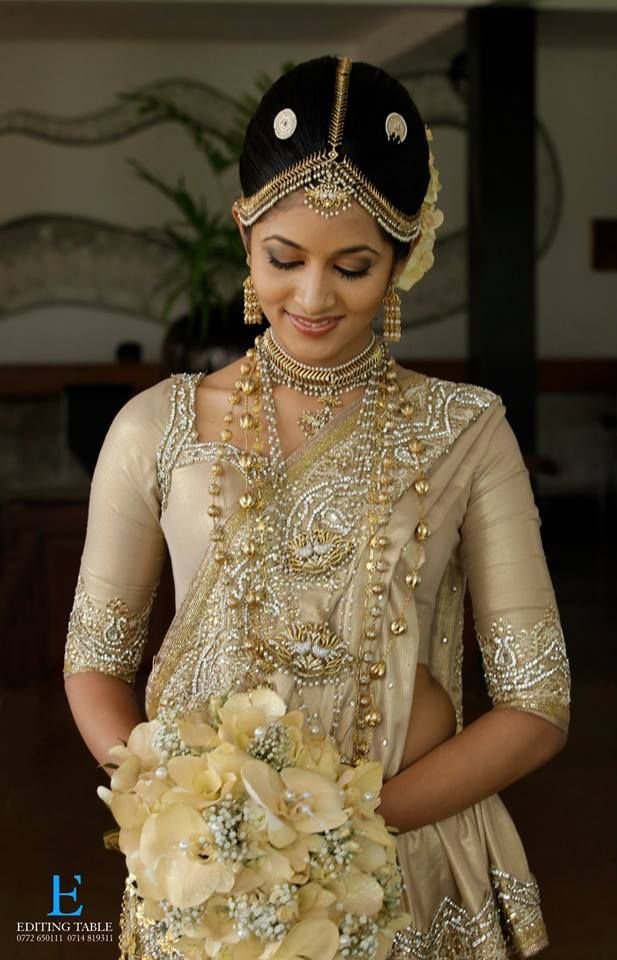
The headgear , Nalalpata or the headband is attractive and significant. It is a gold gem-studded forehead plate, traditionally worn by the king and those in his court. The Nalalpata was tied to the forehead of a young prince during the ceremony naming and assuming the royal sword. His name, decided by the astrologer was inscribed on the headband. A Sinhala wedding thus is a grand ceremony, just like a royal event marking the ‘rights of passage’. The Kandyan bride is distinctive from the rest and only she has the privilege of wearing a Nalalpata on her wedding day. The Nalalpata placed by the mother, on the middle of the forehead at an auspicious time one stem extending down the middle parting of the hair, and another two branches extending across the forehead upto the ear and then the sun and moon ornaments are placed on the right and let respectively on the head. Traditionally the Nalalpata was a rich piece of jewellery embedded in red stones. But, today, it has many forms and is often left to the imagination of the craftsmanTraditionally the Nalalpata was a rich piece of jewellery embedded in red stones. But, today, it has many forms and is often left to the imagination of the craftsman.
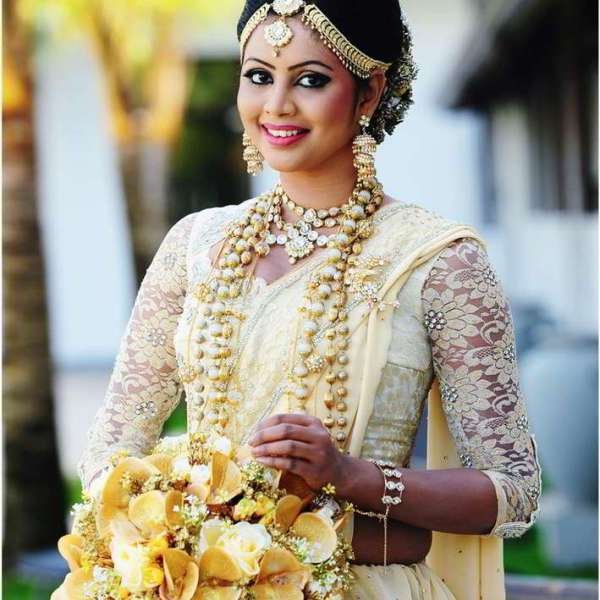
The bride's neck is one whole mass of chains. Padakkam or the pendants are the important part of the chains. Starting from the Nalalpata pendant, each successive chain shows off beautiful pendants, with typical Sinhala designs. A touch of ‘local favors’ is visible in these chains. The Peti Malaya is the last and longest chain encircling the rest. Peti Malaya means a garland of flowers or petals. In India, it stood for real flowers which played an important role in Indian festal dress.
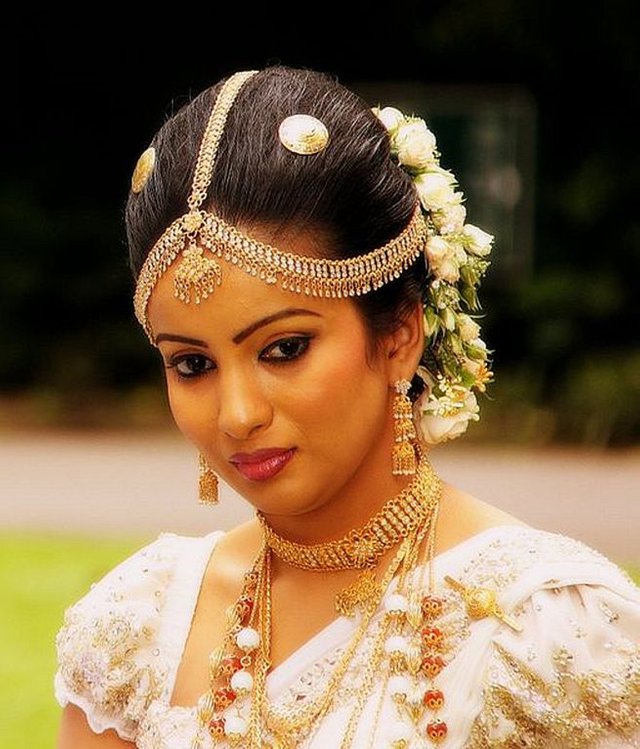
The design of the pendants may vary. Some may choose a flower, others animals. The swan or the Hansa is a famous bird design used. The Hansa Puttuva (two, three or more swans with entwined necks) is featured in many works of art in Sri Lanka. In India, the swan is regarded as a "Sacred Goose". The use of the swan design for pendants is significant and symbolic. The swan stands for purity, beauty and is auspicious. In Sinhala poetry the swan is likened to a woman’s breasts.
Agasthi Malaya is a chain made of agate. Some chains have seeds placed at intervals along the chain. Gedi Valalu or the bangle of fruits is made up of various local seeds strung on a wire. It is in these pieces of jewellery that the goldsmith has utilized local material. Seri Valatu is a broad bangle with three smaller bangles joined together.
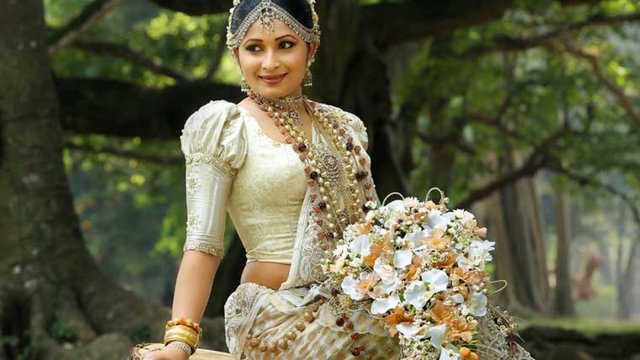
The ear-rings of course clearly indicate their Indian origin. These ear-rings are known as Dimithi with the shape of an over-turned cup. The ear-rings are enhanced with tiny pearls dangling from the Dimithi. The two ear-studs from which the Dimithi flow, are studded with "odd" numbers of stones. Sri Lankans are extremely superstitious when it comes to numbers. Hence, any piece of bridal jewellery or for that matter any jewellery is not made with even numbered stones. Odd numbers are always considered lucky. The number seven is considered a magical number in our tradition; from food to jewellery, number seven crops up in every Sinhala event. Thus, the Kandyan bridal jewellery also consists of seven pendants. It is said that the custom of wearing seven chains may have been due to the practice of observing Goddess Paththini who is clad in similar jewellery. This practice had been there since the Kandy period of the Sinhala history.

Some brides wear armlets as well. Armlets are worn to ward off ill luck. However, the armlet can be more eye- catching when it is made of gold or silver and is studded with gems. Belonging to the headgear are symbols of the sun and the moon placed elegantly on either side of the head, divided by the Nalalpata. They are symbols of eternity and thus, when a bride wears them, they stand for an everlasting and fulfilling relationship of the couple. The figure of the sun and moon are among the one hundred and eight Magul Lakunu or auspicious symbols (Himaliyan forest, filled water pots, flowers, cobra hoods, Swasthika, ear-rings, umbrellas etc.) The sun and the moon are often invoked as guardian and protector especially by those who cultivate the soil.

The Kandyan Nilame Attire

At the dawn of the fifteenth century, a Portuguese colonial arrived on the island followed by Dutch and English colonials who invaded Sri Lanka during the 17th century. Although much of the island came under the domain of European powers, till the eighteenth century, the interior, up country region of the island remained independent, with its capital in Kandy. Arrival of the Europeans played a huge part in cultural changes and a new Sri Lankan middle class was eventually formed which favored Western culture and ideology. The European dress code adopted by this new class changed the traditional concepts of the Sri Lankan society. This led traditional upper class Sri Lankan families to demand a better dress code and the result was the Sri Lankan Nilame Attire which combined Sri Lanka’s rich cultural heritage and style.
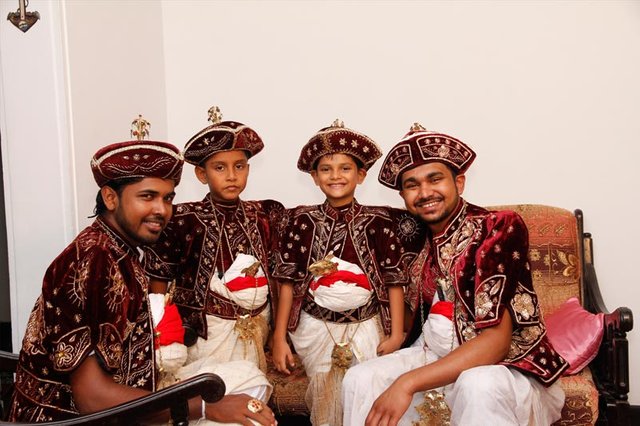
Nilame attire was reserved for the most upper class traditional Sri Lankan families and was made in silk or sheik textiles with embedded jewels and extensive embroidery work. Its colour described the wearer’s designation of work and the status in the society. In the ancient Sri Lanka only the kings and his immediate family members had the privilege of wearing elegant clothing. The king’s ministers and other officials also had uniforms reflecting their designations and the status in the society, but the clothes they wore looked much less exclusive and more ordinary than the attire used by the royal family.The royal attire was specially made by tailors who came down from South India and they kept the art of making these distinctive clothing styles a secret. However, these Indian tailors used Sri Lankan help and with time the Sri Lankan helpers captured the art to a certain extent and later started to sew the designs themselves.
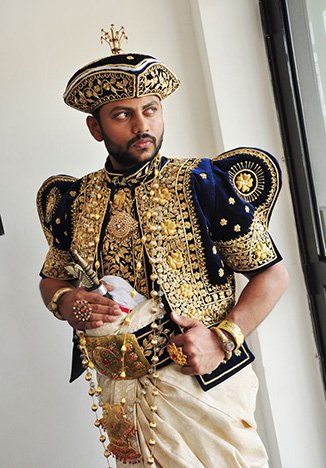
In the 18th century with the down fall of the Kandy Kingdom the Nilame Attire was mostly replaced by western suits due to British colonial influence. Yet, the high class Sri Lankan families occasionally wore them at special occasions such as weddings and cultural events as a symbol of family status. The attire was then reserved only for the Kandian families who kept the right of wearing nilame attire to them.


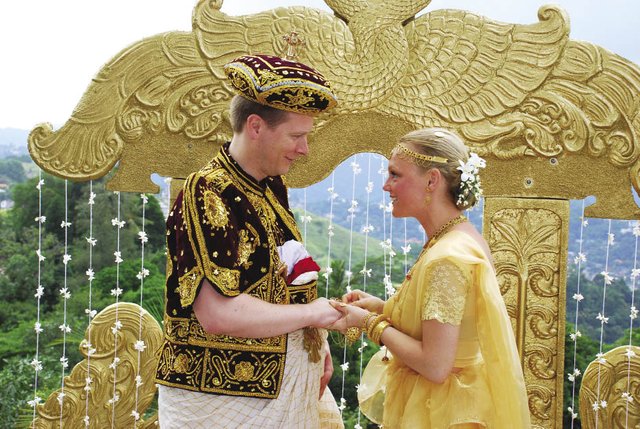
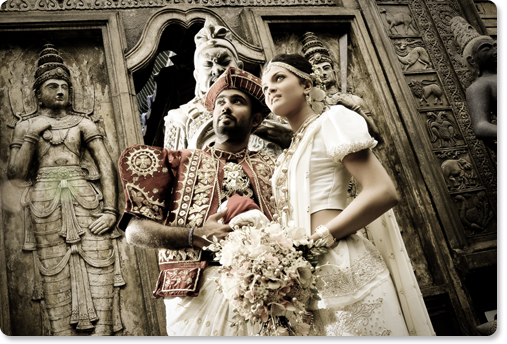
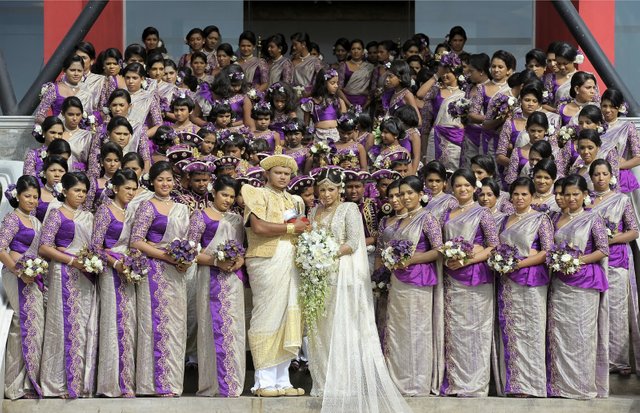
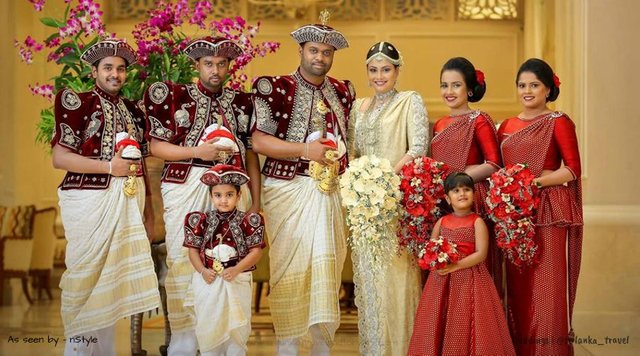
Source:- http://emotionslk.blogspot.com/2009/08/traditional-srilankan-wedding-ceremony_18.html
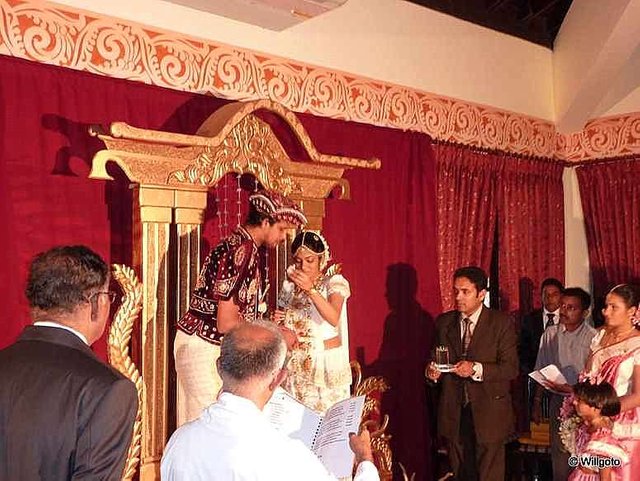
Congratulations @hasantha! You have completed some achievement on Steemit and have been rewarded with new badge(s) :
Click on any badge to view your own Board of Honor on SteemitBoard.
For more information about SteemitBoard, click here
If you no longer want to receive notifications, reply to this comment with the word
STOPAmazing.
Wow - fabulous pictures!! It's like the images come to life.
So, what is a good wedding seating chart template?
So please check the following link to understand what is a worthy event planning software.